Bar Report
Bar Reports display categorized data in vertical bars whose length is proportional to the data values. Group bars to make the chart representation visual and clear.
This report view is useful for dividing data into categories and comparing them.
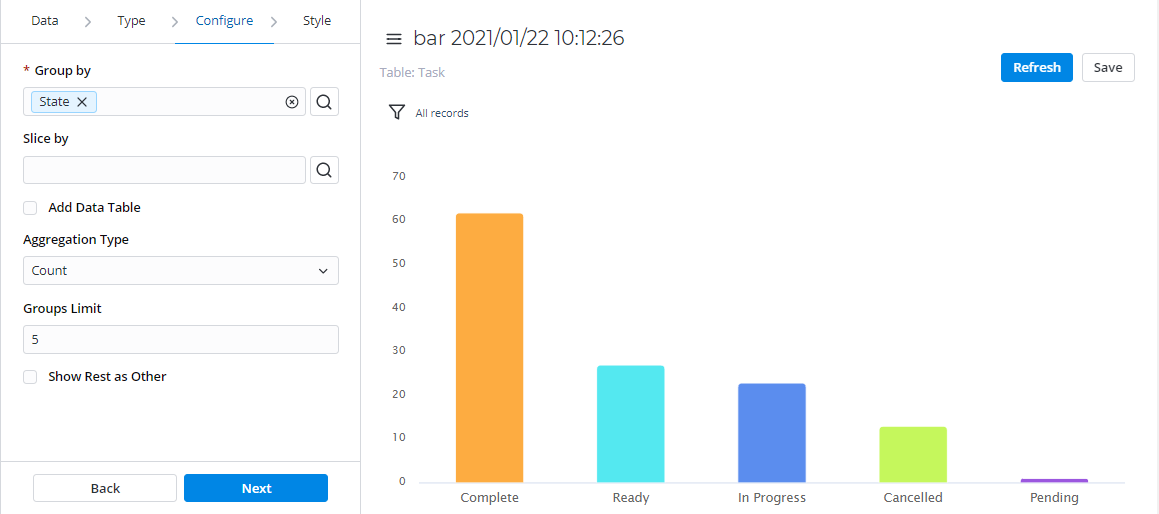

Pie Report
Pie Reports display data in a circular graphic divided into slices. Each slice proportionally displays a particular data category.
This report view is useful to compare the proportions of individual values to the whole. The pie chart is the most obvious choice when the number of categories is small.
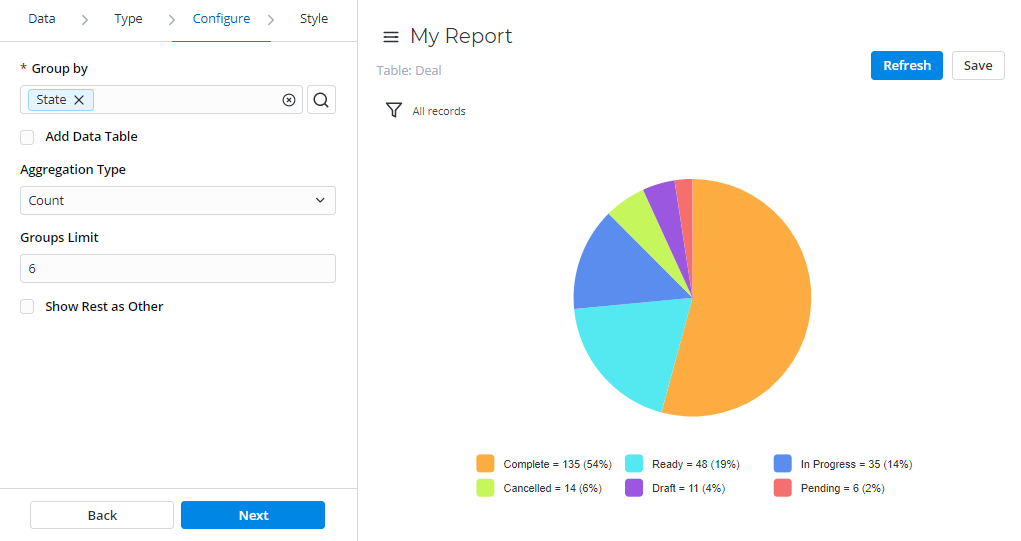

Gauge Report
Gauge Reports present a single metric value from the data via the gauge panel with a dial on it.
This report view is useful for evaluating the criticality according to the established limits set.


Digit Report
Digit Reports provide a simple digit representation of a single metric value.
This report view is useful for monitoring the critical parameters by clear visual presentation.


Line Report
Line Reports present data as a graph of points connected by a line and visualize the metric data values.
This report view is useful for comparing data per time period (years, months, etc.).
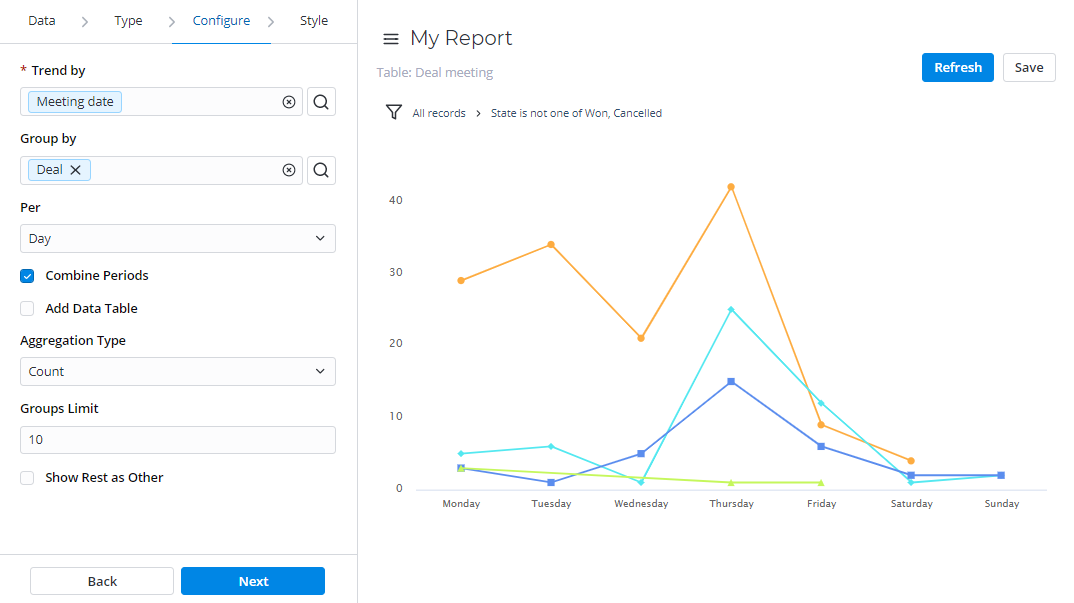

Trend Report
Trend reports show the dynamics of data changes. The data is presented in columns over periods.
This report type is useful for monitoring time parameters.
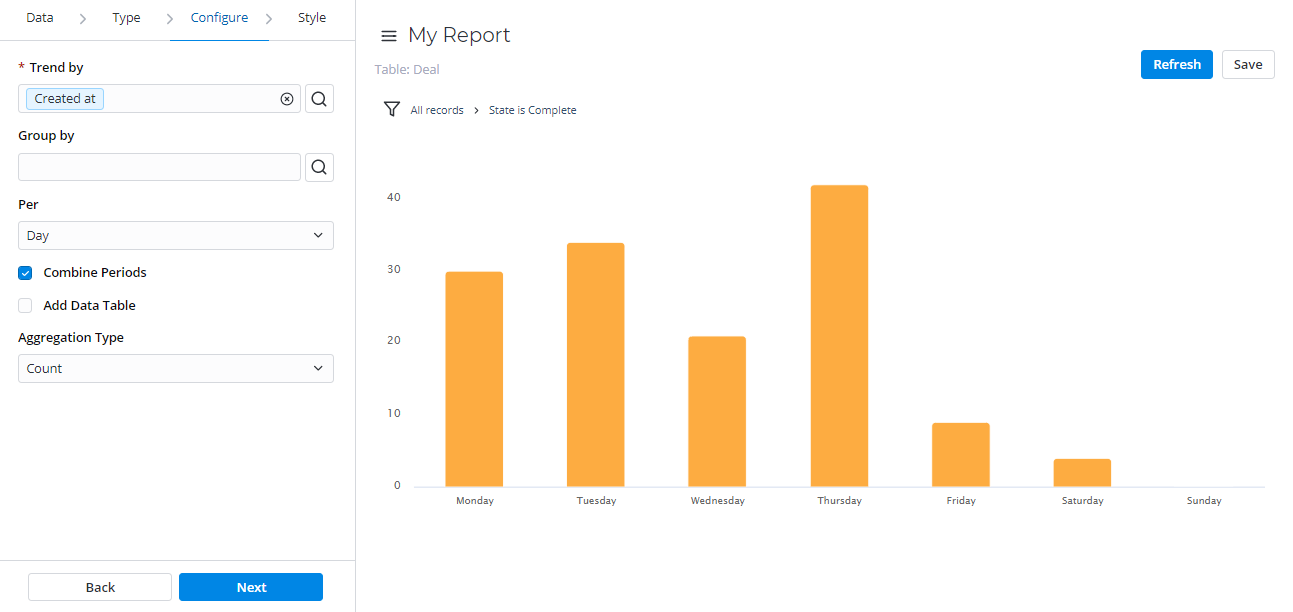

List Report
List Reports represent table data in a list view.
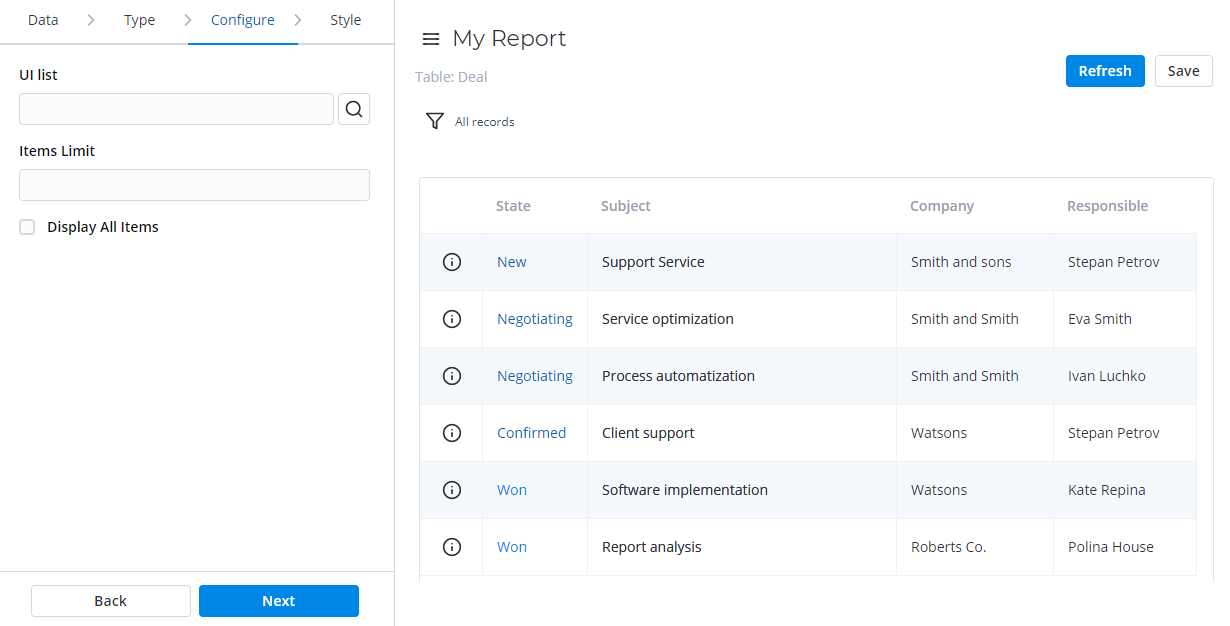

Pivot Table Report
Pivot Reports present your data in a table view by aggregating, grouping, and analyzing using two metrics as a row and column for your chart.
This report view is useful for issues of comparing, summarizing, and counting a large amount of data.
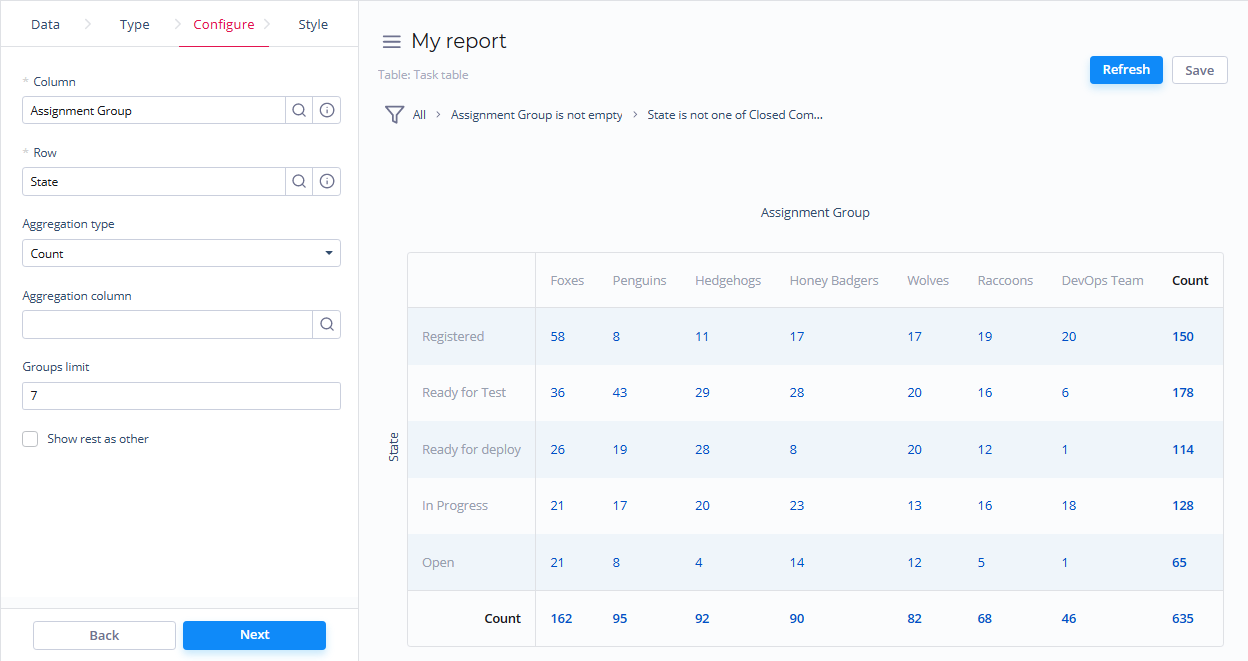

Heatmap Report
Heatmap Reports display your data as the intersection of two metrics in a table with colored cells. These cells contain data values visualized with color brightness.
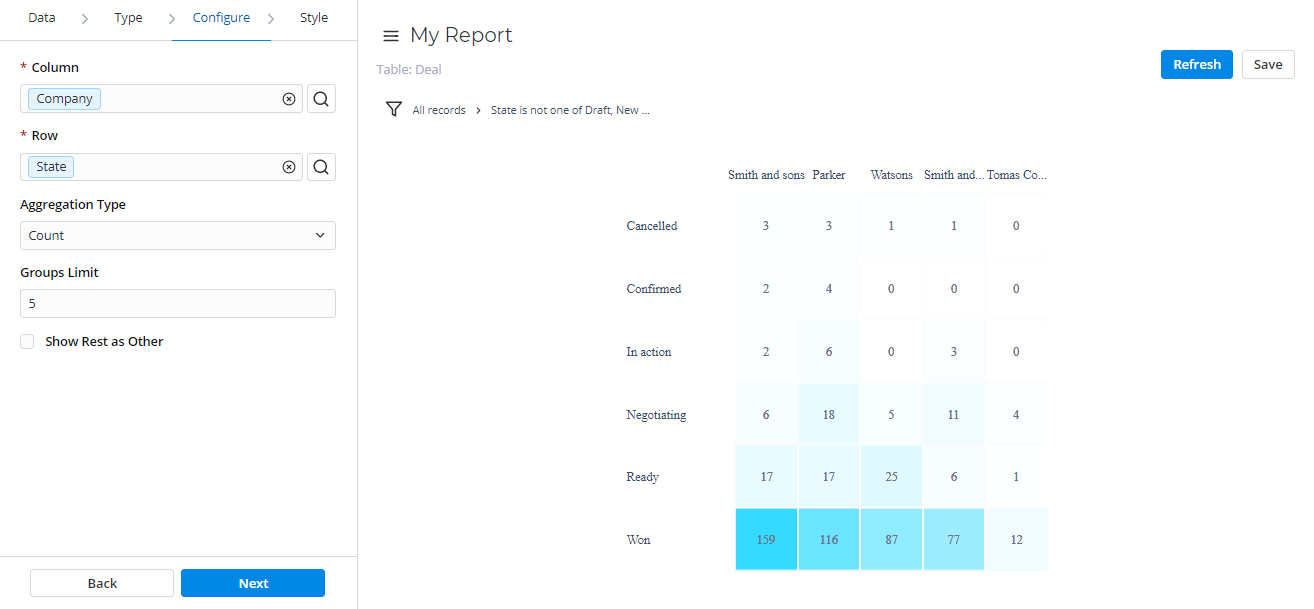

Multilevel Pivot Table Report
Pivot Tables Reports represent your data in a table view. The data is aggregated, grouped, and analyzed basing on two metrics (as a row and column).
This report view is extremely useful for issues of comparing, summarizing, and counting a large amount of data.

